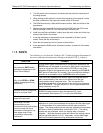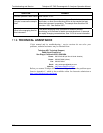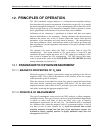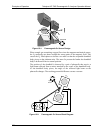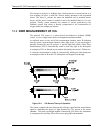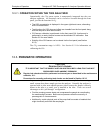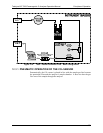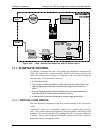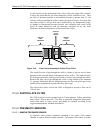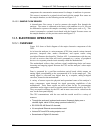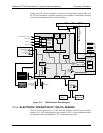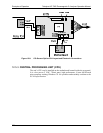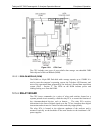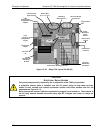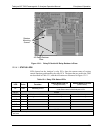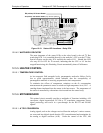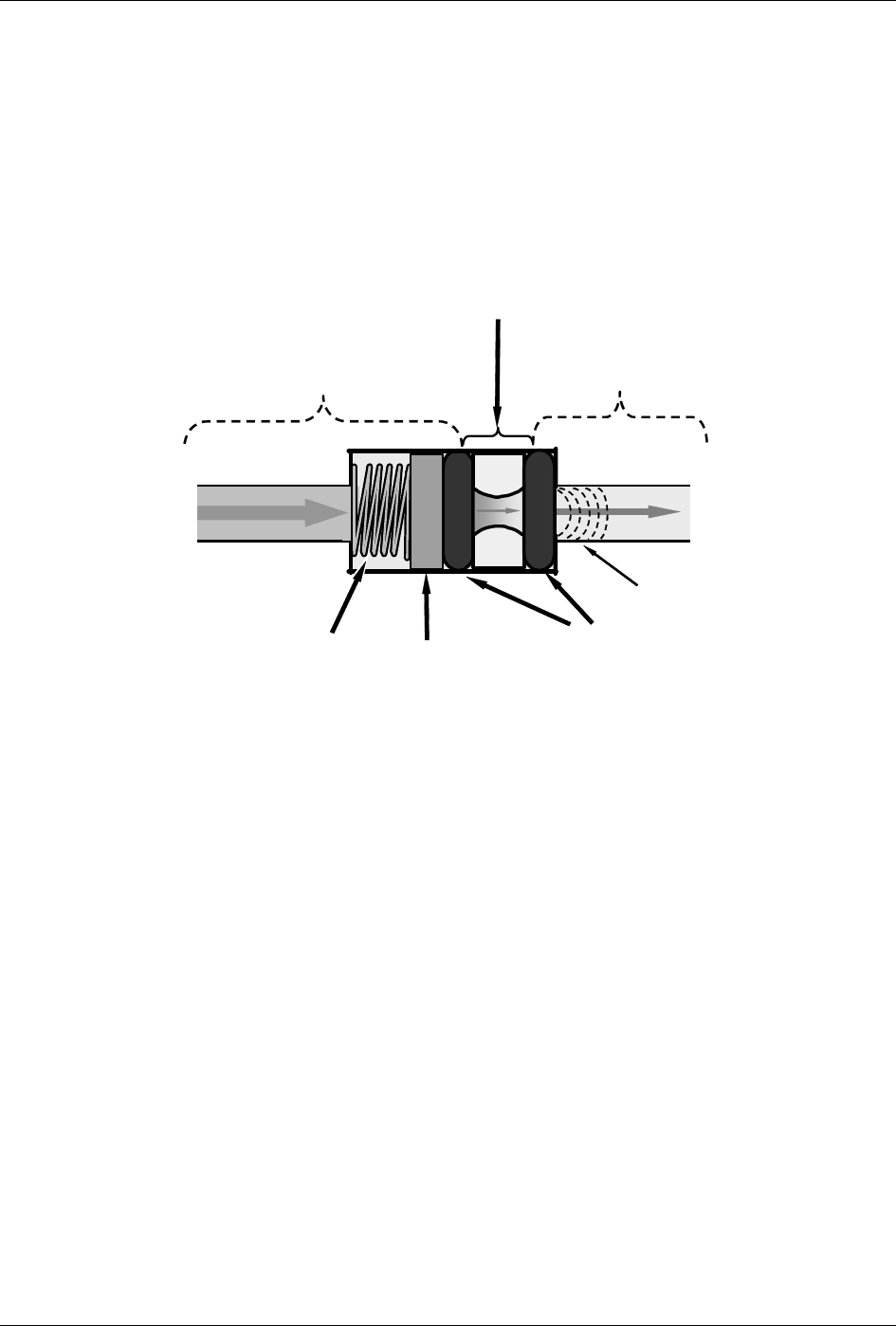
Teledyne API T802 Paramagnetic O
2
Analyzer Operation Manual Principles of Operation
225
As the pressure on the downstream side of the orifice (the pump side) continues
to drop, the speed that the gas flows though the orifice continues to rise. Once
the ratio of upstream pressure to downstream pressure is greater than 2:1, the
velocity of the gas through the orifice reaches the speed of sound. As long as that
ratio stays at least 2:1 the gas flow rate is unaffected by any fluctuations, surges,
or changes in downstream pressure because such variations only travel at the
speed of sound themselves and are therefore cancelled out by the sonic
shockwave at the downstream exit of the critical flow orifice.
SPRING
O-RINGS
FILTER
CRITICAL
FLOW
ORIFICE
A
REA OF
LOW
PRESSURE
AREA OF
HIGH
PRESSURE
Sonic
Shockwave
Figure 12-6: Flow Control Assembly & Critical Flow Orifice
The actual flow rate of gas through the orifice (volume of gas per unit of time),
depends on the size and shape of the aperture in the orifice. The larger the hole,
the more gas molecules, moving at the speed of sound, pass through the orifice.
Because the flow rate of gas through the orifice is only related to the minimum
2:1 pressure differential and not absolute pressure the flow rate of the gas is also
unaffected by degradations in pump efficiency due to age.
The critical flow orifice used in the T802 is designed to provide a flow rate of
120 cm
3
/min.
12.4.2. PARTICULATE FILTER
The T802 Analyzer comes equipped with a 47 mm diameter, Teflon, particulate
filter with a 1 micron pore size. The filter is accessible through the front panel,
which folds down to allow access, and should be changed according to the
suggested maintenance schedule described in
12.4.3. PNEUMATIC SENSORS
12.4.3.1. SAMPLE PRESSURE SENSOR
An absolute value pressure transducer plumbed to the outlet of the sample
chamber is used to measure sample pressure. The output of the sensor is used to
07275B DCN6418



